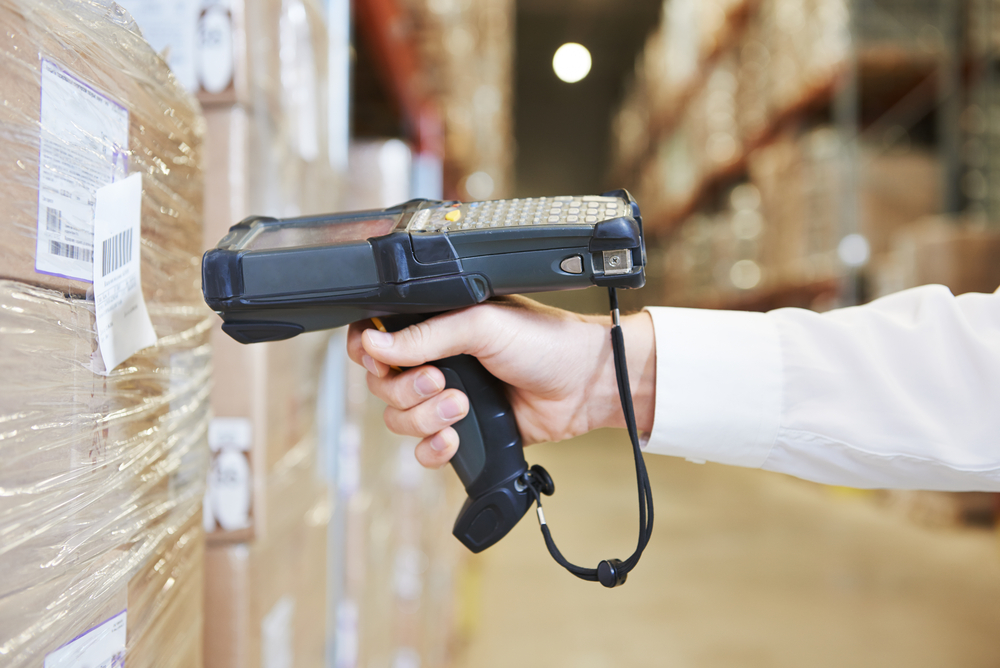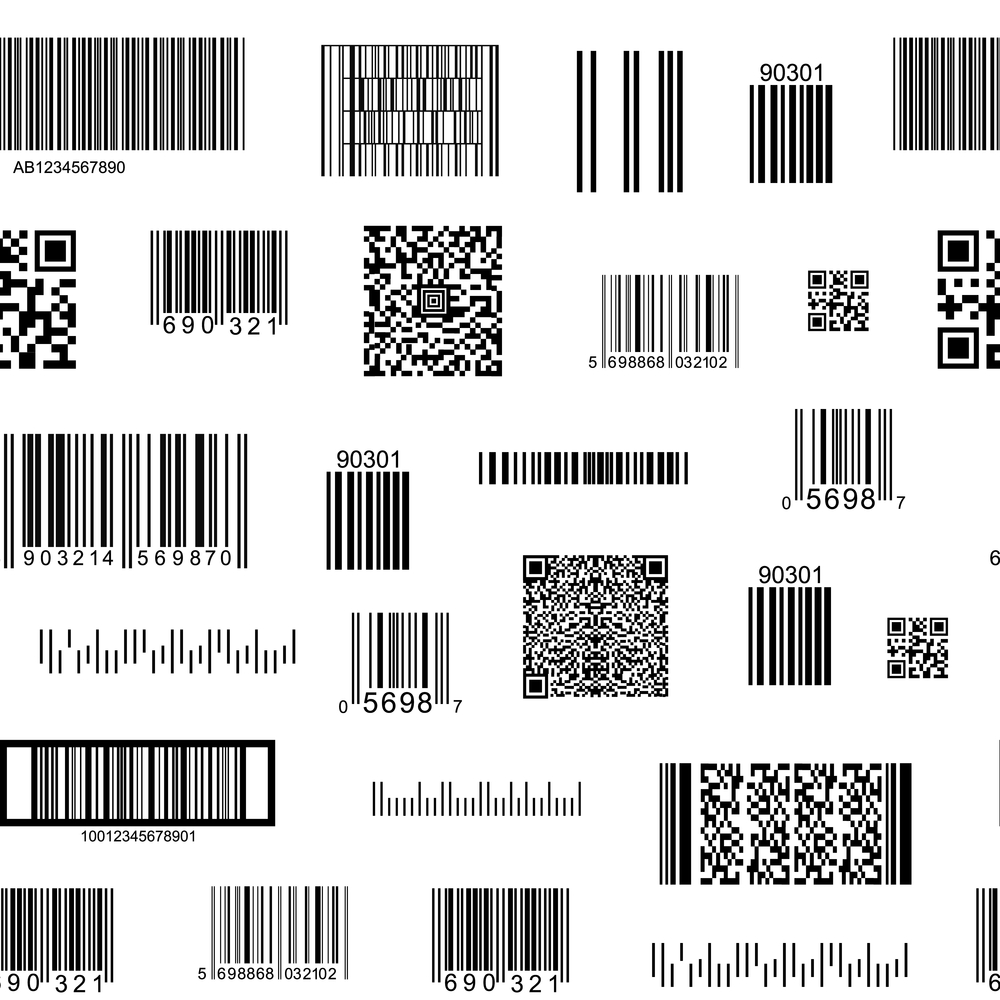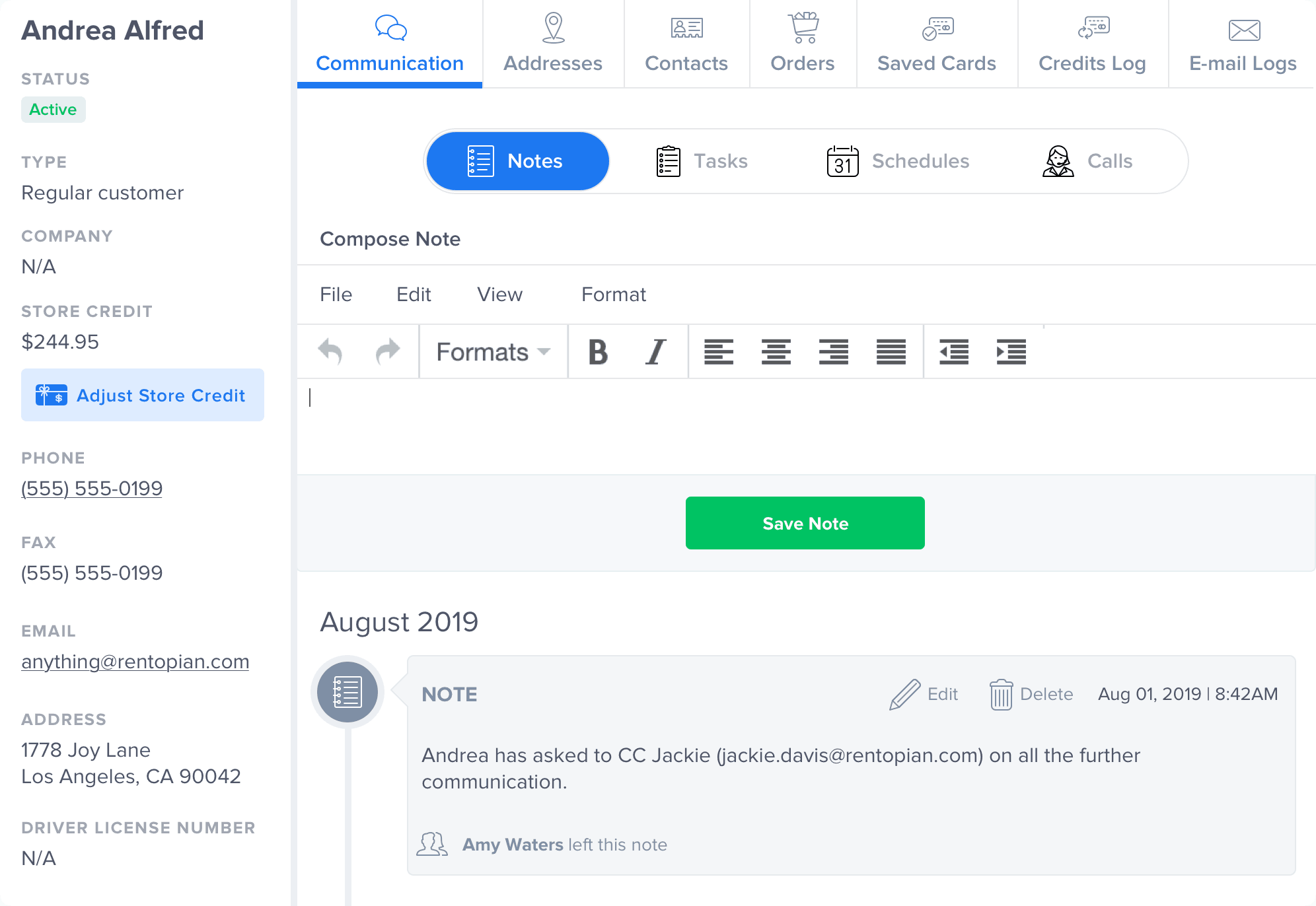
Today, in any industry you’re involved in, there is some aspect of it that technology can improve. It could be the case where there is partial hardware technology or software solution that helps with the day-to-day operations or a case where there is a full-on ERP solution that covers the whole lifecycle of your operations from A to Z.
Any business needs software for invoices, client management, marketing, and more typical tasks that need to be completed on daily bases. There is not a lot of other option a business has and doing these using a pen and paper is not an option anymore.
While most businesses need the basic suite of typical functions from software, the av rental business has more to it and requires specialized av rental software. Just the fact that an av rental company has rental inventory and needs to track rental assets requires a lot more from business software to make it successful.
Here are a few topics that av rental businesses deal with and how those could be managed easier with help of specialized av management software.
AV Rental Equipment and AV Equipment Rental Software
Typically rental equipment needs to be tacked as it goes out on rental and returns. However, av equipment inventory management involves tracking each asset individually which adds to the requirements of your operations and av equipment rental software. This is needed because of the equipment type that is rented out, which at times has a high value, and needs regular maintenance and usage tracking, updates, and more. Additionally, you need to be able to track assets and be able to see where each asset is in real-time.
Using software that allows you to serialize your av equipment allows you to track individual assets, however, that is probably the easiest part of the process. What takes the most time and is executed on daily bases is marking each individual asset as checked out or checked back in, since the point of individual asset tracking is to know which serial number is where – which rental orders are specific serialized assets used on.
While you could serialize your inventory without an av equipment rental software, it would be very time-consuming to keep records of which items went out, which ones were returned, was there any damage done to a given item, and does an item need to be placed in maintenance right after checking it back in. Just the thought of recording serial numbers of every item going out on the order (checking out) and cross-checking the serial numbers of every item on the returning order (checking in) is stressful and will definitely take up a lot of your staff’s time.
AV Inventory Management
A good av inventory management software will not only provide the functionality to organize your av rental inventory using serial numbers but will most importantly provide the tools needed to easily select individual assets as those are checked out and accept those back at check-in.
Inventory Check Out
So you have an order of av rental inventory where you have more than just a few items to deliver to your client, and some of the items are the same product in multiple quantities. Conventionally, if you were to rent out simple chairs and tables, you would use a packing list to prepare inventory – pull it off the shelves, clean and prepare it for loading, then utilize a packing slip to mark what was loaded, delivered, and returned.
However, your inventory is serialized, and one important step when checking out inventory is to record all the specific serial numbers that will be used for the given rental order. Now, if you were to manually type or write each serial number of every asset, this could drastically increase the checkout time, which means you now have to do this process well before the equipment needs to leave your warehouse whether you are delivering it or the client is picking it up. This leads to needing to keep the set of inventory in a different corner or each order with already recorded asset numbers being used.
Inventory Check Out
The same time-consuming task applies when you are returning your inventory to the warehouse, but now on top of reading all the serial numbers, you will need to cross-check with the previous records and make sure you are getting the same serial numbers back that you actually checked out on a given order.
Sure, this could be done manually but will take a lot of time especially if the number of items on the order is large, which is very common in the av industry. Another subject of concern is the error margin when reading, recording, and cross-checking serial numbers. There is a pretty good chance of transposing a letter or number, recording a wrong serial number, and then having to go back and figure out what the issue was, to begin with.
Inventory Scanning Hardware and Software
Aside from serializing your individual assets, there are solutions you should implement to achieve streamlined av equipment inventory management. There are barcodes and QR codes to utilize that will help you automate the process of selecting the serial numbers to check out inventory as well as check the inventory back in when accepting it back into your warehouse. There are devices to scan those barcodes and QR codes so that no staff member needs to read and record those manually. There is also RFID scanner and tags that enhance the process even more and make it much more efficient, even faster than utilizing barcodes or QR codes.
Barcodes and QR Codes
You have seen and are familiar with barcodes and QR codes, whether it is from your local grocery store where the cashier is checking you out, or from amazon deliveries that have a barcode labeled and will scan it upon drop off. So how are these used within the av rental industry and how are these functions connected to av inventory management software?
Barcode and QR codes are device-readable codes that could represent a number or a mixture of numbers and letters. Barcodes usually store fewer and more simple codes while QR codes can and typically are used to represent more complex codes that include URLs that are also readable by smartphone cameras.
Now, back to tracking our serialized assets, these could be used to store our asset’s serial numbers, and unlike products, in the grocery store, we will not reuse the same barcode for the thousands of same brand gallons of milk product. We will make sure our barcodes/QR codes are unique where each one is tied to a unique serial number used for a given individual asset.
We commonly see companies use the same serial number as the barcode or qr codes for easier management, as long as they don’t have several different products using the same serial number but have nothing in common as far as a product.
Another question that comes up very often is what is the difference between a barcode and QR code when it comes to av inventory management software specifically. The answer to this question is based on the type of product one carries and the use case. If you are renting out av equipment for bands and artists that are going to use these in their music videos, it is probably better to use QR codes since those could be very small so that is not visible in the video, but yet readable but QR code scanner. However, if your inventory is not for a stage set up and rehearsals, then you might be able to get away with barcodes.
RFID – Radio Frequency Identification
Using barcodes or QR codes speeds up the operations and provides accuracy, but you are still bound to scan each individual item as it leaves or comes back from a rental. What options are there to avoid doing that?
RFID devices and tags are one of the solutions that allow you to avoid scanning each individual item, which is very important when it comes to av rentals. You do not want to forget a small item, whether it is a cable or remote control for one of your orders.
RFID technology breaks down into 2 types; active and passive technologies to track inventory movements. Active RFID technology relies on stationary readers throughout the warehouse. RFID tags pass the readers, and their movements are logged into the av inventory management software. Therefore, active tags work best when they’re used by companies that need real-time tracking of their inventories or where there have been issues with security.
Passive RFID technology requires the use of handheld readers to track inventory check-ins and check-outs. When tags are scanned, the inventory management software records the item’s details. With passive RFID tags, the read range is approximately 40 feet; with active RFID tags, the range is 300 feet.
So how do you use it with av rental inventory? Well, each RFID tag will represent a serial number that will be assigned to your inventory through your av equipment inventory management software. You will then use the handheld RFID scanner in the warehouse, in the truck loaded with equipment, or in the studio where your equipment is used. The scanner will return the result to your software which in turn will check the item out or in depending on the state of the serial numbers.
Just so one can compare, if you are scanning 50 barcodes in the truck full of inventory one by one, you can now just press the scanner button once and get a complete result of what’s missing or not. So make sure your av rental software does support RFID tracking integrations so that you don’t have to spend too much time on a mundane task that could be 100% automated and provide better accuracy.
Utilizing RFID technology has its downsides as well. The very first reason is the pricing associated with RFID hardware itself which could be pricy. If you are able to get a handheld Bluetooth barcode or QR code scanner for about $50 from amazon, the RFID passive handheld scanner will cost a bit over $1,000 (links to the products are below for visual comparison). While you can generate and print barcodes or QR codes through your av rental software almost free, you will have to buy RFID tags from a third-party vendor and the price will vary depending on the type of the tag. However, if you are renting out many orders and usually have a lot of items on most of your rentals, it could be a time saver for your staff, which is definitely worth it.
https://www.atlasrfidstore.com/tsl-1128-bluetooth-uhf-rfid-reader/
https://a.co/d/8UJzBoT
Where and How Else Can a Rental Software Help with AV Rental Business
We often see AV rental companies providing more services to their clients. Most common include studio rentals where the bands or artists can do their rehearsals or record. This leads you into another avenue of services, including storage lockers where your clients can rent storage lockers on monthly or daily bases to store their own equipment that they love to use. Mentioned services definitely add a whole other set of functionality that you will need, preferably within the same av rental software that you already use.
Renting Space – Studios
Renting out space can get tricky, you could have a studio that is one room, but could become sectional and be rented on two different occasions, it can be rented for a full day, week but also hourly or maybe based on set time slots.
How do you quickly see which studio is available when and if is it available for the full day or at certain times? This is yet another item to check on your list when selecting rental software! A true one-stop-shop av rental software should allow you to keep track of hourly rentals, define time slots if need to be, and allow to see the real-time availability of those spaces.
This is especially important if one or more of your spaces can be rented out in different time increments, starting from hours and time slots to days and weeks at a time. The space needs to be tied to all the mentioned options so that when you have dozen of reservations already you can clearly see when and for how long a given space is available. If you can’t do that, you will lose many potential reservations and thus decrease your company’s profits.
Long and Short Term Space Rentals – Storage Lockers
While a storage locker can be assumed to be another space that can be rented out just like any space, maybe such as a studio, its requirements are drastically different. For starters, most of the storage lockers are being rented out for long periods of time, usually month to month. In addition, it is common to rent it out on an ongoing bases, which means you have no idea when that locker will be available to be rented to someone else. This brings yet another complexity to the mix, you now have to charge your client on an ongoing bases much like a subscription.
What does this mean exactly? This means that it is very recommended to have certain features as part of your rental software to handle above mentioned robust scenarios, in order not to find yourself in a situation of trying to figure things out most of the day.
If you have long-term rentals, you do need to have software that allows setting up daily, 3-day, weekly, monthly and etc.. pricing structures. Some months have 28 days some 31, but subscription-based storage rental should amount to the same price.
Since the space is rented for a month to start with but there is no certainty as to when it will end, you do need to have an open-ended rentals feature. This means that when you reserve a space for a client, it becomes unavailable for anyone else indefinitely until the space is cleared. Calculating open-ended rentals in the mix with short terms rentals without a proper rental software solution could be almost impossible!
Finally, charging your client on an ongoing bases needs a lot of work when it is done manually. You will need to renew/extend their rental order at the end of each rental as you come to find out that the client is not clearing the space and needs it for longer. Then, you will need to charge their card if you are lucky to have it on file, otherwise need to create and send them an invoice and follow through to make sure it is paid and marked as such, not including the time spend to follow up on unpaid invoices… That all could be included in rental software that allows you to create open-ended and auto-extending rental orders and set automatic payments or statements to be sent out to the client. Finishing it off with automatic payment reminders to follow up with your client without you lifting a finger!
CRM – Client Management
Every business software has some kind of CRM, at the very least a minimal version with basic functions, but is that enough for the av rental company?
While in some cases most of your clients might be individuals or companies with one point of contact, conventionally an av rental company works with 3 parties at the very least for each of their rental orders. There is the band renting out some equipment from you, which consists of a few artists requesting specific items, there is the management company for the band, and of course in some cases the agent.
In some other cases, the same band might be represented by several different companies, which in turn have a few different contacts and departments. Of course, there are also very common cases where the same band or artist has a few different billing companies responsible for the payments.
This is why it is important to have CRM that has the specific scenarios covered for the av rental-specific clients. This includes the ability to create a band as the client, which then has multiple sub-companies and multiple contacts, addresses and etc… Your client is your business, and client relations need to be clearly and accurately managed.
Final Thoughts
Rental software solutions come with different features and capabilities to customize and make a lot of simple operation tasks easier to complete. However, if you are in an av rental business, it is strongly recommended to go for specialized software that knows what your day-to-day looks and feels like and provides custom-tailored solutions for your problems.
If you are a part of a rental company and would like to learn more do not hesitate to contact us! We would love to tell you about our experience and how Rentopian can help.




